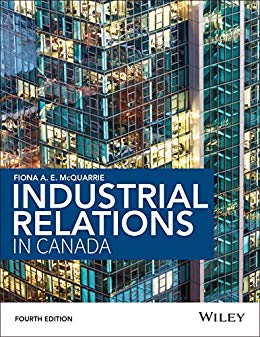Description
Industrial Relations in Canada 4th Edition By Fiona McQuarrie – Test Bank
CHAPTER 3
HISTORY OF THE CANADIAN UNION MOVEMENT
Multiple Choice Questions
1. Historically, what type of industries has the Canadian economy relied on?
- Tertiary industries
- Primary and secondary industries
- Tertiary and secondary industries
- Primary and tertiary industries
Answer B Page 55 intermediate
2. Which level of government in Canada has primary responsibility for the enactment of legislation governing labour relations?
- The federal government
- Provincial governments
- Municipal governments
- The federal and provincial governments have joint responsibility
Answer B Page 68 easy
3. The earliest attempts to organize trade unions in Canada were limited to specific geographic areas and small groups of workers, usually those in a particular trade or occupation. What is the term used to describe this model?
- A business union
- A local union
- A craft union
- All of the above
Answer C Page 56 intermediate
4. What is the term used to describe an organizing model which focuses on “strength in numbers” rather than limited representation of a particular elite group?
- Trade unionism
- Craft unionism
- National unionism
- Industrial unionism
Answer D Page 57 intermediate
5. Until 1872, unions were considered to be a method to restrain trade and were therefore illegal in Canada. What piece of legislation removed this barrier to the organization of unions?
- The Trades Union Act
- The Industrial Disputes Act
- The Union Conspiracy Act
- The Trades and Labour Act
Answer A Page 58 difficult
6. What was the first union to bring to Canada the notion of lobbying for changes to benefit all workers?
A) The Trades and Labour Congress
B) The Canadian Labour Union
C) The Canadian Congress of Labour
D) None of the above
Answer A Page 59 intermediate
7. Which piece of legislation passed in 1907 required disputes to be referred to a third party before the right to strike or lockout could be acquired?
- The Trades Union Act
- The Disputes Intervention Act
- The Conciliation Act
- The Industrial Disputes Investigation Act
Answer D Page 62 easy
8. What American-based union gained prominence in Canada as a result of frustration with the Trades and Labour Congress’ inaction against the poor working conditions and conscription issues of World War I?
- The Canadian Congress of Labour
- One Big Union
- The Knights of Labour
- The Industrial Workers of the World
Answer B Page 63 difficult
9. Which of the following was a factor in the formation of the Confédération des travailleurs catholique du Canada in Quebec (1921)?
- The influence of the Catholic Church in the labour movement
- The desire to avoid the Canadianization of the Quebec labour movement
- The wish to preserve Quebec’s cultural independence
- All of the above
Answer A Page 65-66 intermediate
10. What was the effect of the British Privy Council decision in the matter of Snider v. Toronto Electrical Commission?
- To prohibit strikes in public utilities
- To limit the legislative authority of the federal government in labour relations matters to federally regulated industries
- To limit the legislative powers of provincial governments in labour relations matters
- All of the above
Answer B Page 68 difficult
11. Which of the following was a right granted to workers by the Wagner Act in the United States (1935)?
- The right to organize
- The right to collective bargaining
- The right to strike without employer harassment
- All of the above
Answer D Page 68 easy
12. What was the goal of founding the Congress of Industrial Organizations in the United States (1935)?
- To create a federation to represent workers in mass-production industries
- To compete with the American Federation of Labor in organizing trade workers exclusively
- To undertake political action to improve the plight of workers
- All of the above
Answer A Page 69 difficult
Related Test Bank

Reviews
There are no reviews yet.